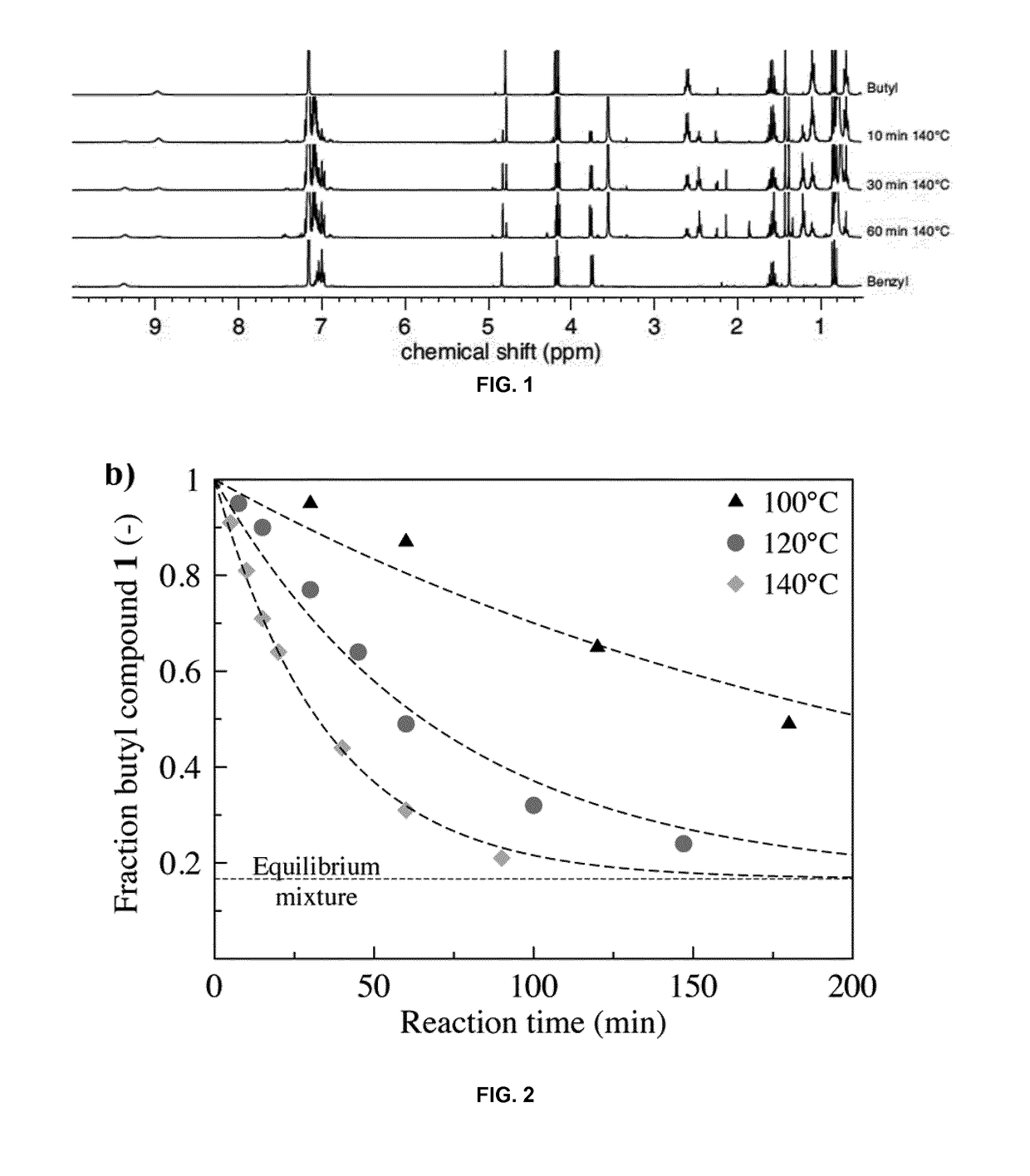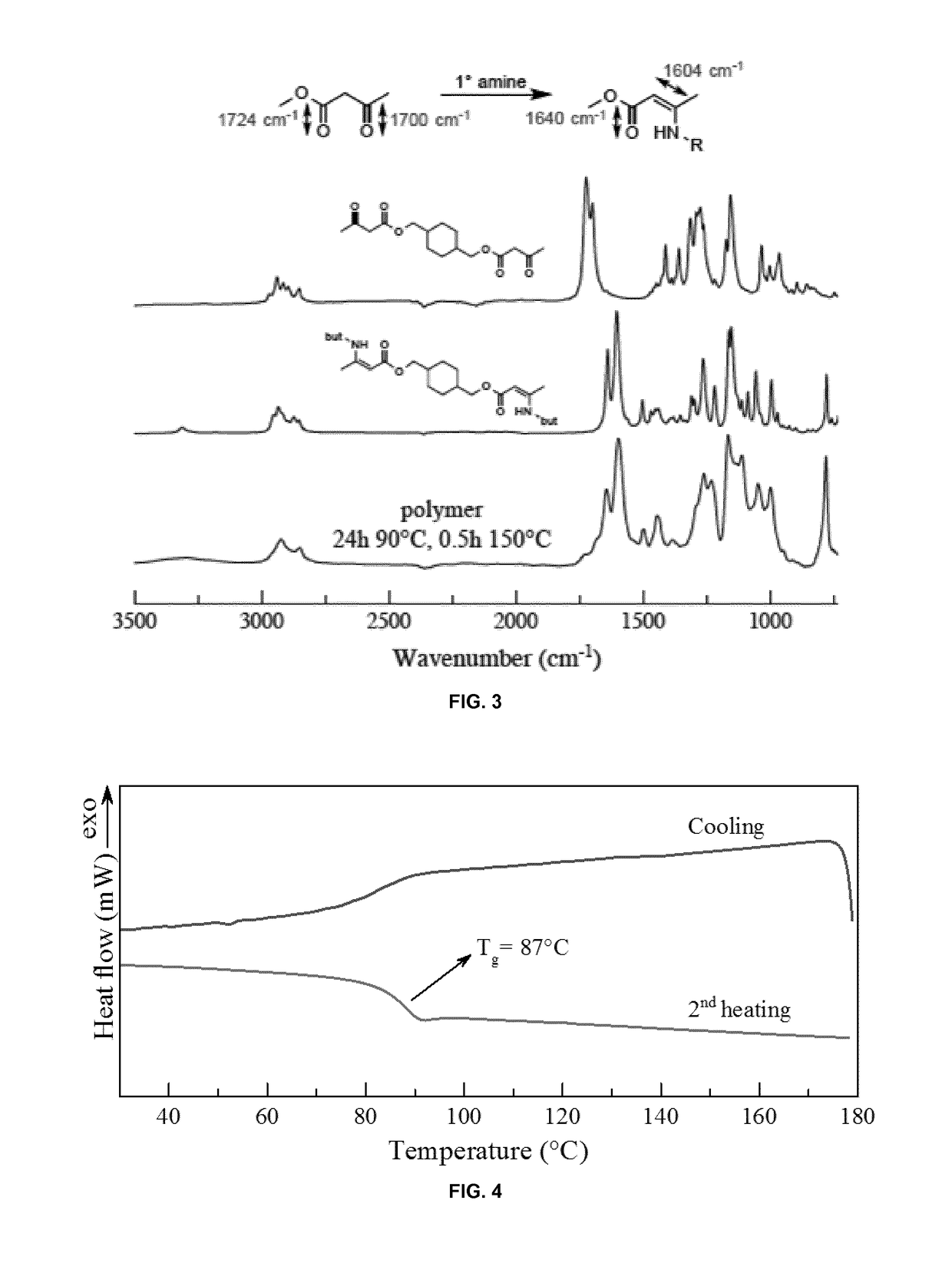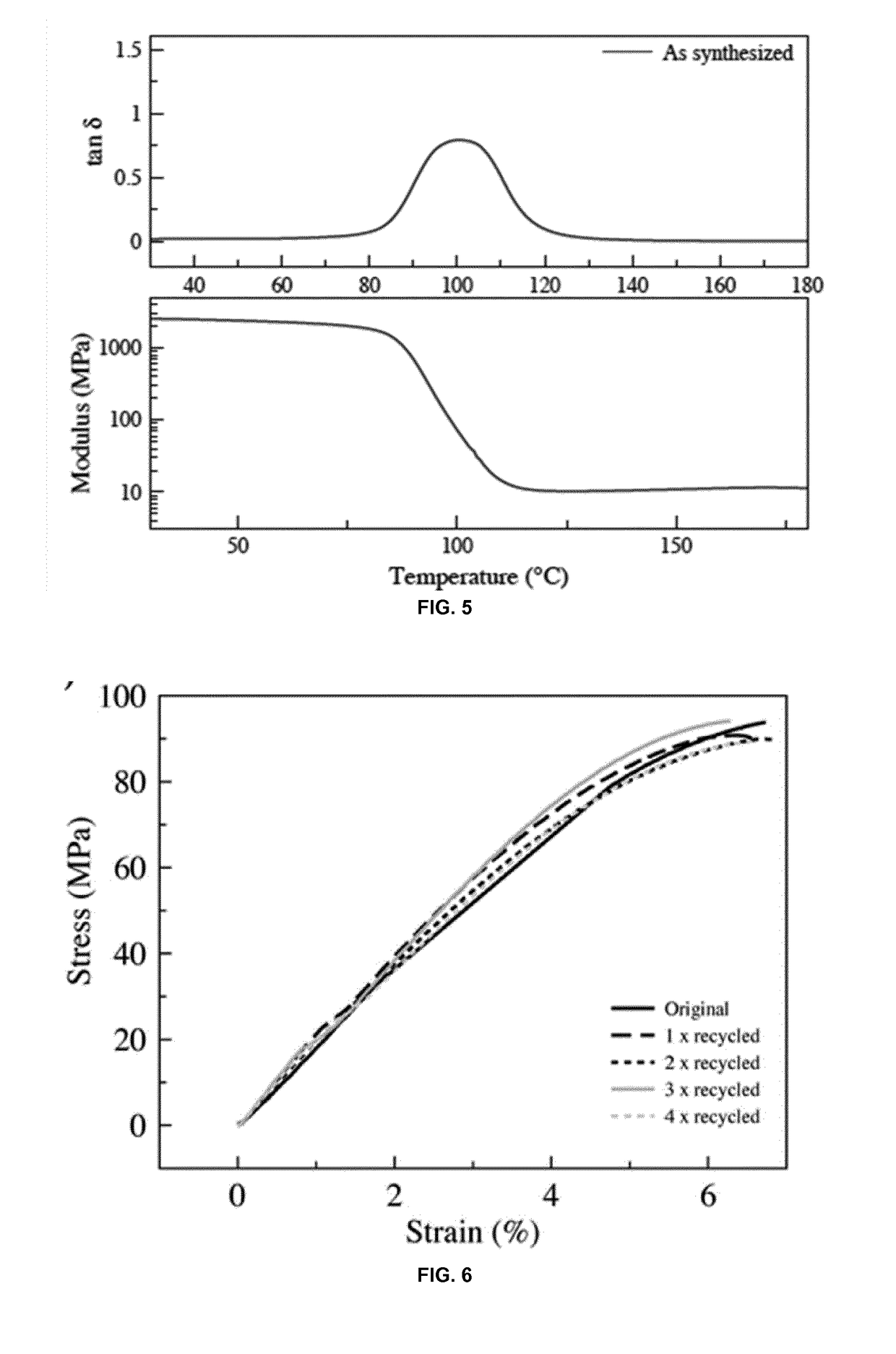Compositions comprising a polymeric network
a polymer network and polymer technology, applied in the field of compositions, can solve the problems of not being able to be reshaped, processed or recycled after full curing, and their mechanical properties are often not comparable to those of commercial resins
- Summary
- Abstract
- Description
- Claims
- Application Information
AI Technical Summary
Benefits of technology
Problems solved by technology
Method used
Image
Examples
example 1
Low Molecular Weight Compounds
[0528]Propyl acetoacetate: 2,2,6-Trimethyl-4H-1,3-dioxin-4-one (5.38 g, 34 mmol) and 1-propanol (10 mL) were mixed in a pressure tube and heated for 3 h at 135° C. After the reaction was finished according to thin layer chromatography (TLC), the excess of 1-propanol was removed in vacuo yielding pure propyl acetoacetate. Yield: 98%, 5.34 g. 1H NMR (300 MHz, CDCl3, δ): 4.10 (t, J=6.5 Hz, 2H), 3.45 (s, 2H), 2.27 (s, 3H), 1.63 (m, 2H), 0.94 (t, J=6.5 Hz, 3H).
[0529]Propyl-3-(butylamino)but-2-enoate 1 and propyl-3-(benzylamino) but-2 enoate 3: Propyl acetoacetate (0.250 g, 1.73 mmol) and butyl- or benzylamine (2 eq, 3.47 mmol) were dissolved in 5 mL methanol and stirred overnight. When the enaminone formation was complete (TLC), the solvent was removed and the mixture was extracted twice with brine and CH2Cl2. The combined organic phases were dried with MgSO4 and evaporated, yielding the desired product. The obtained product was purified by flash chromatogra...
example 2
Polymer Network Composition Synthesis
[0538]1,4-Bis(hydroxymethyl)cyclohexane bisacetoacetate (CDM-AA): 1,4 Cyclohexane dimethanol (88.9 g, 0.61 mol) and tert-butyl acetoacetate (200 g, 1.26 mol) were dissolved in 120 mL of Xylene in a 1 L flask equipped with a still head and cooler. The mixture was heated for 90 minutes at 135° C. The tert-butanol product was removed by distillation during the reaction and the temperature in the still head was typically between 75 and 90° C. When the temperature dropped to 50° C., the mixture was cooled and the solvent was removed in vacuo. The resulting crude product crystallized upon cooling with ice and consisted of a 28:72 mixture of the cis- and trans isomer as indicated by the singlets at 4.08 ppm for the cis-isomer and 3.97 ppm for the trans-isomer. Recrystallization of the crude product in isopropanol yielded 72% of white crystals which consisted of 92% of the trans-acetoacetate. Yield: 72%, 96.5 g. 1H NMR (300 MHz, CDCl3, δ)=4.09 (d, J=7.19...
example 3
Polymer Composition Characterization
[0549]Polymer 2 as prepared in Example 2 was further characterized: The bulk polymerization of CDM-AA, m-xylylene diamine and TREN yielded a glassy network at room temperature with excellent mechanical properties, evidenced by a glass transition temperature of about 87° C. (FIG. 4), a storage modulus of ˜2.4 GPa (FIG. 5) and stress at break of ˜90 MPa (FIG. 6). Dynamic mechanical analysis (DMA) confirmed the presence of a network with a rubbery plateau of 10 MPa (FIG. 5).
[0550]By thermogravimetic analysis (TGA), the vinylogous urethane networks proved to have good thermal stability with a mass loss of 2.5% at 287° C. (295° C. under nitrogen atmosphere) (FIG. 7). Since the materials are expected to withstand elevated temperatures for longer periods when being processed, isothermal TGA was also conducted (FIG. 8). The weight loss after 2 h at 150° C. and 180° C. was negligible (<0.5%) and comparable to that of a commercial epoxy (EPON 828 cured with...
PUM
| Property | Measurement | Unit |
|---|---|---|
| Percent by mass | aaaaa | aaaaa |
| Percent by mass | aaaaa | aaaaa |
| Percent by mass | aaaaa | aaaaa |
Abstract
Description
Claims
Application Information
 Login to View More
Login to View More - R&D
- Intellectual Property
- Life Sciences
- Materials
- Tech Scout
- Unparalleled Data Quality
- Higher Quality Content
- 60% Fewer Hallucinations
Browse by: Latest US Patents, China's latest patents, Technical Efficacy Thesaurus, Application Domain, Technology Topic, Popular Technical Reports.
© 2025 PatSnap. All rights reserved.Legal|Privacy policy|Modern Slavery Act Transparency Statement|Sitemap|About US| Contact US: help@patsnap.com



